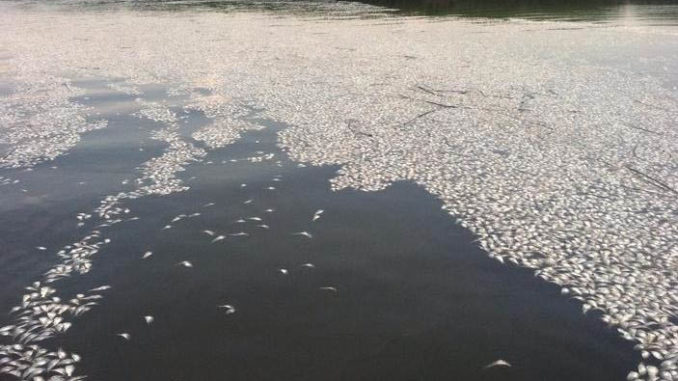
Menhaden make up huge majority of more than a million dead fish
Some Georgetown County boaters and beachgoers got a scare late last week when they noticed a mass fish kill near North Inlet at the upper end of Winyah Bay, but according to the S.C. Department of Natural Resources and S.C. Department of Health and Environmental Control, the fish kill, and its apparent cause, is as common occurrence that poses no threat to humans.
“It is actually a natural occurrence this time of year,” said Dean Cain, a biologist with SCDNR who put the number of dead fish at “upwards of a million.”
The vast majority were menhaden, a small baitfish that’s common to South Carolina’s inshore waters during the summer. “A number of red drum and a few other species were mixed in, but overwhelmingly, this kill was made up of menhaden,” he said.
Cain said the North Inlet fish kill was followed up by another in nearby Clambank Creek. He numbered the kill in the hundreds of thousands and said they were largely menhaden again.
Both kills occurred for the same basic reason: hypoxia.
Phil Maier, the SCDNR’s Director of Coastal Reserves and Outreach, described hypoxia as an abnormally low level of dissolved oxygen, and he said it happens in inshore waters more often than most people think, because the effects aren’t always as obvious as these two instances.
“An early morning low tide, warm temperatures and real stable conditions point toward a low dissolved-oxygen kill. June through August is when we typically see these kinds of events,” Maier said.
At low tide, some fish remain in pockets that hold water and basically become ponds until the high tide returns. Last week’s low tide was unusually low – often referred to as a “negative” tide – and it took longer than normal for these pockets to refill with the oxygen-rich water that high tide brings. Unfortunately for those fish that remained in these pockets, the numbers of fish that stuck around outweighed the available oxygen, causing the hypoxia.
Cain said the kill will likely have no long-term impact on the population of menhaden or other fish species in the local area.
“There are a lot of dead menhaden, but there are also a lot of menhaden alive and kicking,” said Cain, who figures the dead fish will decompose, wash offshore or be eaten by birds within a few days, and humans will have no reason to avoid the area.




Be the first to comment